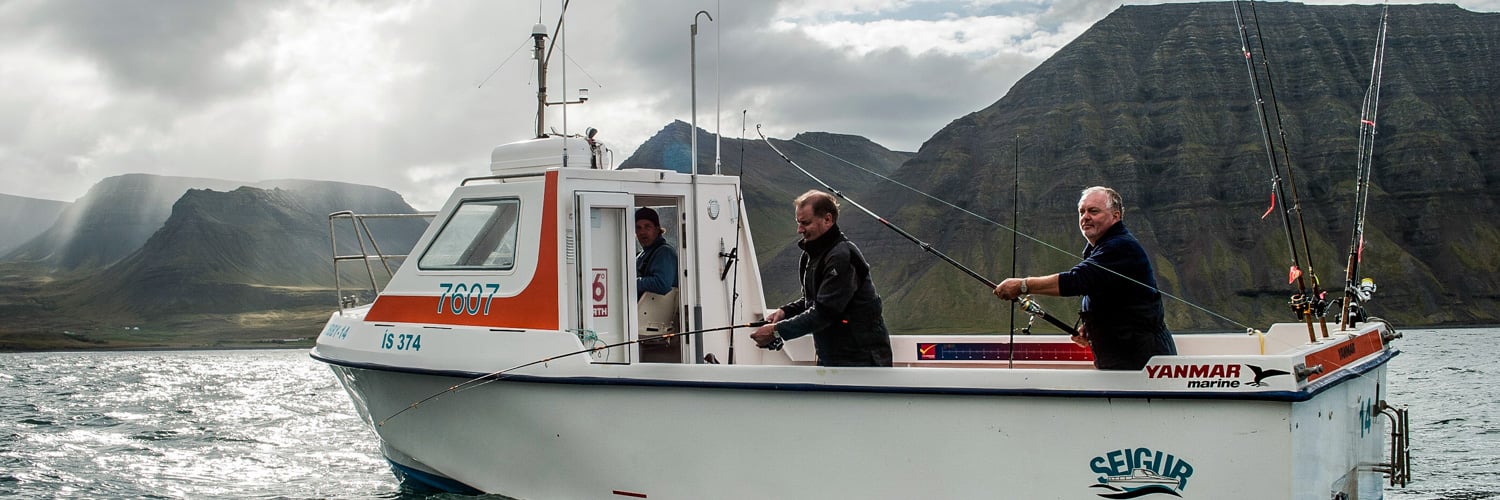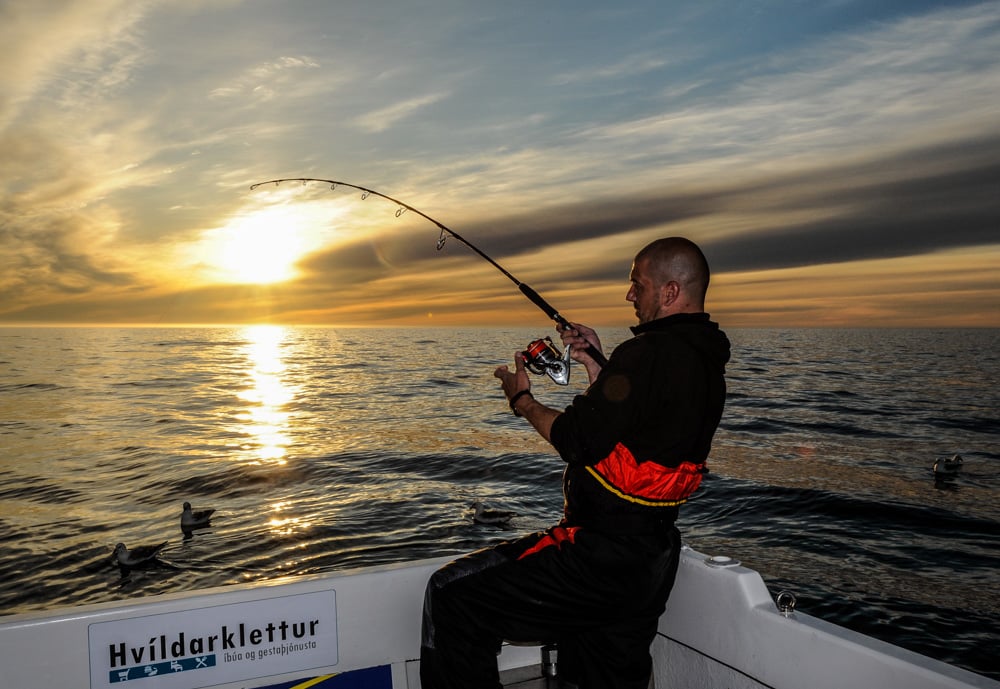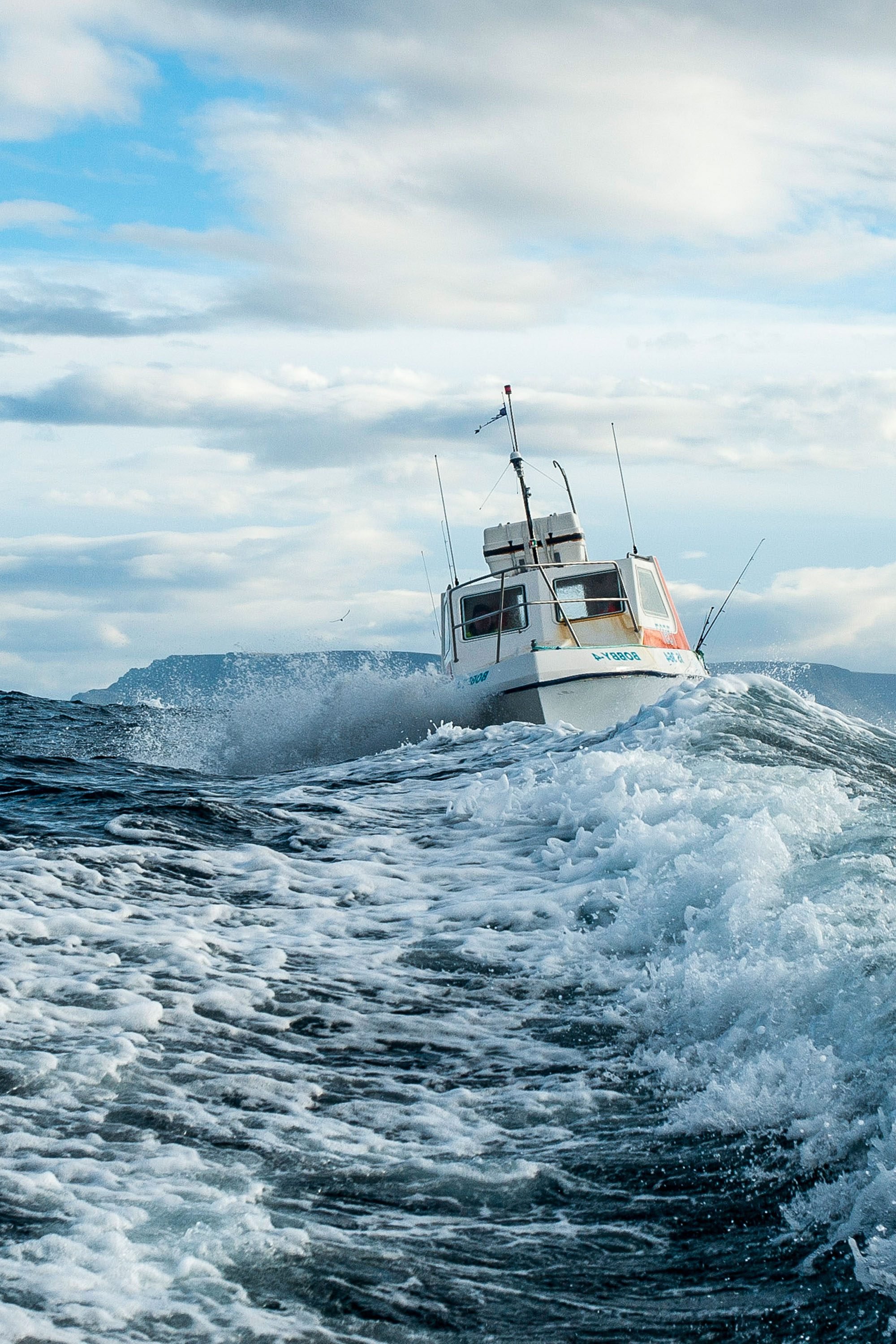

Iceland is a Nordic island country situated at the junction of the North Atlantic and Arctic Oceans and is the 18th largest island in the world and Europes second largest after Great Britain. It has a mixed geography of tundra, glaciers, active volcanoes, hundreds of rivers and lakes, as well as a rugged 4,970-km-long coastline punctuated by fjords.
When the first settlers arrived in the country, they soon realised the ground and climate was no good for agriculture and that the island contained very few land mammals, so they relied heavily on the fish stocks in the rich waters around the coastline. Hundreds of years on and things haven’t changed too much, as fishing is still one of the largest industries in Iceland, both commercial fishing and, more importantly, recreational. Thousands of sea anglers from around Europe visit Iceland every year to target the plentiful Cod and Halibut stocks.
The country has an exclusive fisheries zone of over 760,000 square kilometres, seven times the land area of itself and a fantastic fisheries policy, meaning the fish stocks are exceptionally well looked after. The industry does, after all, support over 4% of the population with work.
This means that sea anglers who travel to Iceland can enjoy some of the finest deep-sea fishing for Cod and Halibut anywhere in the world.
Below we have listed the main destinations for you to choose from.


Suðureyri is on the west coast of Iceland and perfectly situated for sea fishing, just inside on of the western fjords, this town has everything the travelling angler can look for. Whether you choose to target the huge Cod or the massive Halibut, we are sure that you will find Iceland to be a real treasure.


Ever fancied targeting huge Halibut and Cod in Iceland? Well we are pleased to offer you this fantastic opportunity to do battle with such fish in the comfort of your very own boat. Either choose to be fully guided or DIY, the option is yours. We provide the very best boats that come fully equipped with all the electronics to make your stay perfect.


Average Customer Satisfaction Score 78%


The main draw for saltwater anglers fishing in Iceland is the large Cod and Halibut. Due to the fantastic fisheries policy that Iceland have in place, these fish are plentiful in the waters around the island and grow to some huge sizes. Cod to over 50lb and Halibut to over 100lb are regularly landed each season.
Depending on what marks you decide to fish, smaller species such as Haddock, Wolfish, Coalfish and Plaice can all be readily caught. Even though these are classed as ‘smaller species’, many still grow to specimen proportions, thanks to the rich blue waters and abundance of natural food.
The tackle needed for deep-sea fishing in Iceland is standard boat fishing gear, similar to what you would use wreck fishing in the UK. 30-50lb class boat rods and decent multiplier reels loaded with strong braid, a selection of pirks, shads, and terminal tackle are all you really need.
The destination does hire fishing tackle, but many anglers like to take there own.
The most popular form of fishing for the Cod is with heavy metal pirks, or shads fished close to the bottom. The same method is very productive for the Coalfish, but instead of leaving the shad/pirk near the bottom, we advise you to hit bottom then wind back to the surface, and the Coalfish normally will take on the retrieve.
Halibut can also be caught on shads, but one of the most productive methods is to drift a few metres off the bottom with a dead Coalfish.
The smaller species such as Plaice are often caught closer inshore on smaller baited rigs.
Our boats are Icelandic made Seigla boats, which are tailor-made for deep-sea fishing in the country. The boats are 7.80 metres long and 2.85 meters wide with 130 horsepower turbo diesel engine (inboard engine). Onboard we provide all the equipment you need: GPS plotter, Eco-load, Radio to coast-guard, GPS security signal, life vest, lifeboat, extra tank for fuel and rod rests.
The boats are self-drive, and one person will need to be the nominated captain. Iceland takes boat safety very seriously, so the nominated captain will then need to take a very quick boat operators certificate on the first morning. Once this is complete, you’ll then be free to start your sea fishing adventure.
As the boats are self-drive, you can explore all the fishing marks for yourself. The main Cod fishing grounds are anything from 30 mins to an hours drive from the harbour. The Halibut grounds are as close as 5 minutes from the harbour. However, there are many different areas around for you to try. The staff at the lodge can normally always point you in the right direction for a few fish if you need some help.
If you’re looking to target the largest Cod, then we recommend travelling in March and April as the fish are at there biggest and the average weight is enormous.
The peak time for Halibut and Coalfish happens around the same time as each other, with the summer months of May to September being most prolific. July and August are two of the most popular months to travel.
The answer is yes, however sea fishing in Iceland is strictly controlled. You are permitted to bring back up to 20 kilos of filleted fish; this can be Cod, Halibut, Wolfish or Coalfish; however, you will need to purchase the fillets from the fish factory at around a hundred euros per box.
The catch that you make on your own boat will be weighed each day at the harbour and will actually form part of the area’s quota.











